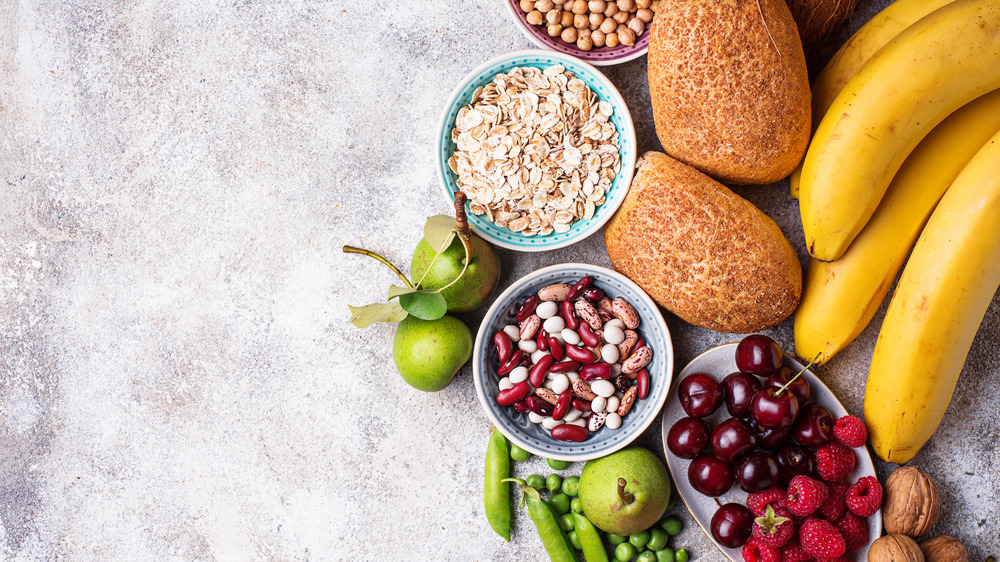When You Eat Too Much Fiber, This Is What Happens
You know by now just how important fiber is. You should be getting 14 grams of fiber per 1,000 calories per day, according to the Cleveland Clinic. That's 28 grams of fiber for a 2,000 calorie a day diet. You can get that fiber from fruits, vegetables, and grains. Getting enough fiber can prevent intestinal cancer, lower cholesterol, and even regulate blood sugar levels. Fiber can also help you lose weight and relieve constipation.
A 2017 study published in the American Journal of Lifestyle Medicine found that Americans think they're getting enough fiber, but only about five percent of those surveyed do actually get enough. Researchers claim that getting enough fiber is associated with a reduced risk of heart disease, hypertension, type two diabetes, gastrointestinal disorders, and some cancers.
You can ensure you're getting enough fiber by checking the nutrition labels on your food packaging or by Googling how much fiber is in the produce you're eating. With all of its touted benefits, the question remains — what happens when you eat too much fiber?
Symptoms of eating too much fiber
It is possible to consume too much fiber. According to Healthline, symptoms of getting too much fiber are bloating, stomach pain, flatulence, diarrhea, constipation, reduced blood sugar levels, and temporary weight gain. People with Crohn's disease may even experience an intestinal blockage. If you have consumed too much fiber, you should seek medical attention if you experience a complete inability to pass stool or gas, a high fever, nausea, or vomiting.
Luckily, there are ways to get relief after overeating fiber. Drink plenty of water, stop taking any fiber supplements, avoid high-fiber or fiber-fortified foods, and go for a walk or try some light stretching. Once you feel better, you can start to slowly reintroduce fiber-rich foods.
Foods naturally high in fiber include apples, oranges, peas, Brussels sprouts, beans, oats, nuts, seeds, green beans, dark leafy vegetables, radish, carrots, beets, wheat bran, whole grains, barley, chicory root, leeks, onions, bananas, and Jerusalem artichoke.
If you need a guide, keep a diet journal so you can calculate how much fiber you're getting every day, or try a daily food intake app that shows you how much fiber you're getting. Adjust your fiber intake by eating more or less fiber-rich foods depending on your calculations, per Healthline.


